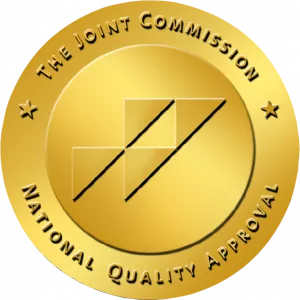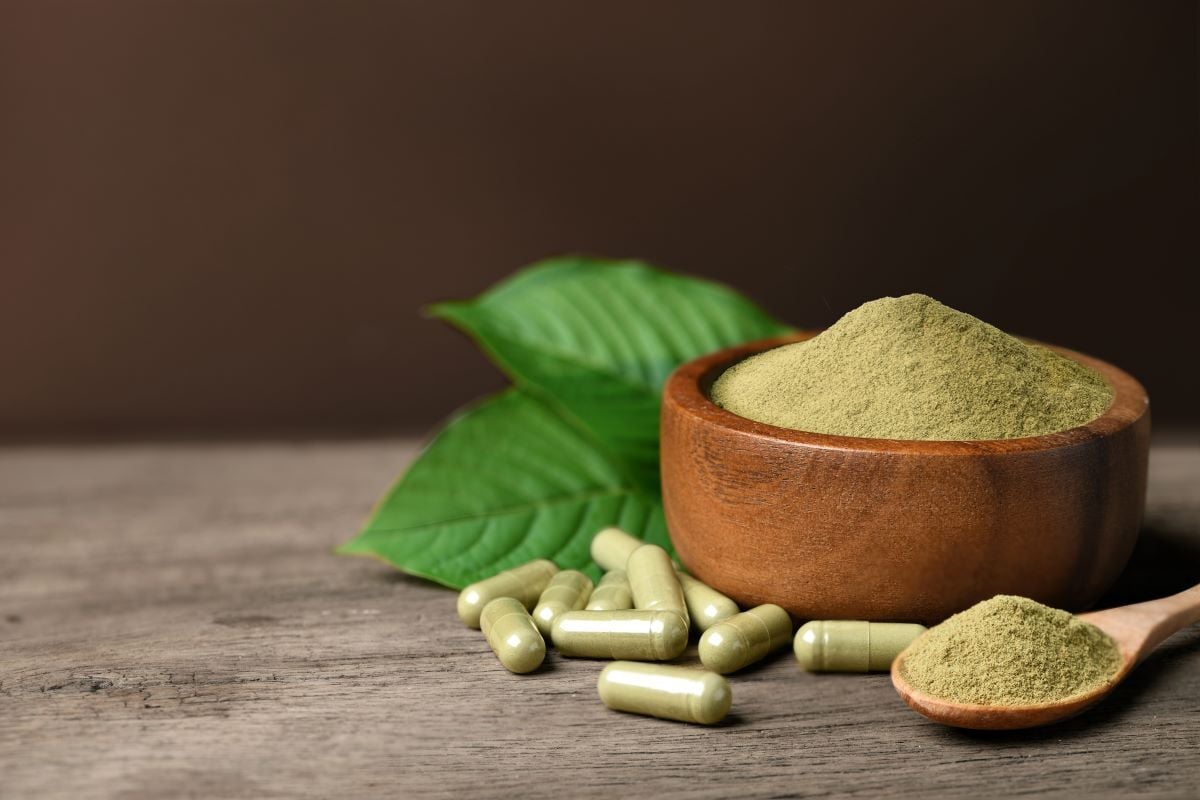Kratom addiction has become a matter of concern of late. People who often use kratom and have become addicted to the substance may be looking for a method to help them quit.
Although some believe that sheer willpower can cure kratom addiction, at Avenues Recovery, we know that rehab is the most effective route for safe detox and long-lasting sobriety.
In this article, we will explore kratom from a legal, medical, and recreational perspective. We’ll uncover its origins, what it’s used for, kratom withdrawal, signs of kratom dependence, and kratom dependence treatment. If you or a loved one is using kratom, read on so you will be well-informed.
What is kratom?
Kratom is a little-known substance derived from the leaves of the Mitragyna speciosa evergreen tree, found in Southeast Asia. It can be obtained over the counter in pill or liquid form and is used to help people struggling with cough, pain, anxiety, diarrhea, and depression, and even opioid withdrawal, although it has not been tested or proven to assist in any of these ailments.
At the time of writing, this substance is not controlled by the Controlled Substances Act. (The CSA is a legal act that categorizes all addictive substances into five categories, depending on its potential for abuse and addictiveness. Kratom hasn’t made it to any category yet.)
However, the FDA (The Food and Drug Administration) has not identified any medicinal or other necessary use of the drug, making it purely recreational. They have also issued warnings against products with kratom, stating that it could cause serious reactions like liver toxicity, seizures, and substance use disorders (SUD).

Signs and symptoms of kratom dependence
Like all addictive substances, there are signs and symptoms that can clue you in as to whether or not someone is addicted to kratom.
Here are some examples:
- Frequency or dosage- People who are addicted to kratom often use the drug more often or in higher doses than recommended on the packet. They may be buying kratom products more often than seems necessary, because they are using it up too quickly.
- New friends- People who are using addictive substances often find that they lose interest in their regular friends. They may seek out new friends who also engage in addictive substances, preferring to hang out and use drugs together rather than spend time with friends who do not use drugs.
- Secrecy- Lying and secrecy is the breeding ground for addiction. People who use kratom may start to lie about where they have been, what they are doing, and other parts of their lives, to hide and cover up their addictive behaviors.
- Deteriorating relationships - Beside losing interest in formally close friends and acquaintances, people who use kratom may find themselves arguing more often, picking fights, and otherwise ruining and estranging close family relationships and friends.
- Mood swings- When using kratom, users report feeling ‘high,’ euphoric, or energetic, similar to the effects of stimulants. However, when the substance leaves the body, the person will experience withdrawal symptoms that make them feel sad, low, and anxious. These mood swings will be apparent on people who consistently use kratom.
- Physical symptoms- There are an array of physical signs that a person may be using kratom. When the drug runs its course through the system and exits the body, withdrawal symptoms set it. These are obvious signs (expounded upon below) which indicate that the person may be using kratom.
- Failing to attend to responsibilities - Whether it’s appointments, work, school, or family, people using kratom will often prioritize their substance use over any commitments or responsibilities.

Side effects of kratom abuse
According to the U.S. Drug Enforcement Administration (DEA), kratom is ineffective as a pain reliever or for opioid withdrawal, as well as unsafe and possibly dangerous.
Here are some side effects of kratom abuse:
- Nausea and vomiting
- Drowsiness
- Dizziness
- Muscular pain
- Elevated blood pressure
- Constipation
- Damage to the liver
- Breathing issues
- Delusions
- Hallucinations
- Trouble with coordination
- Confusion
- Seizures
In the long term, chronic kratom use can result in insomnia, weight loss, anorexia, urination, dry mouth, and psychosis.

Kratom withdrawal symptoms:
When attempting to quit kratom, the user will experience withdrawal symptoms. This is because as a person consistently uses kratom, their bodies develop tolerance and become dependent on the substance to function normally. As soon as the drug has exited the body, the body has to adjust to existing without the substance it has come to rely on, causing uncomfortable withdrawal symptoms.
The symptoms include fatigue, nausea and vomiting, restlessness, depression, muscle pain, agitation, insomnia, mood swings, and sweating. The user will also experience cravings for kratom, making it difficult to stick to the course and abstain from kratom until the withdrawal symptoms pass. The length and severity of the symptoms depend on many factors, including duration of use, frequency, dosage, age, co-occurring substance use, and other factors.
Kratom withdrawal treatment:
As with many substances, you can choose to undergo the withdrawal symptoms alone, at home. However, home detox is the more difficult option. The risks of detoxing at home are relapse, using unhealthy amounts of over-the-counter medication to relive the symptoms, and other medical issues as a result of withdrawal.
Instead, you can choose to complete kratom detox treatment at a hospital, medical center, or rehab facility, where the professional staff can ensure you are safe and comfortable the entire time. They will provide medications, monitor your health, and greatly reduce the likelihood of relapse during this period.
Kratom withdrawal timeline
Knowing the withdrawal timeline for kratom treatment is helpful because an addict who is attempting to quit kratom may feel like the withdrawal period is endless. They may feel a sense of despair and hopelessness, causing them to give in to their craving for kratom, which sabotages the withdrawal process.
Knowing the timeline allows you more control over the process since you can anticipate the stages before they arrive, take action to mitigate the pain, and be reminded that they won’t last forever. Here is a rough timeline that most people who withdraw from kratom experience:
- Stage one- Early withdrawal: This stage occurs once the kratom runs its course through the internal organs and exits the body. Right away, the body feels uncomfortable existing without the drug it craves to function normally, causing the first withdrawal symptoms. This can take place from 6-12 hours after the last dose of kratom.
- Stage two- Acute withdrawal: This stage is more painful and intense then early withdrawal. The person will feel very unwell physically, experience fierce cravings for kratom, and struggle with emotional and mental issues like depression, anxiety, and mood swings. This stage occurs from around 24- 72 hours after the last dose.
- Stage three- Subacute withdrawal: In this stage, the person will feel the withdrawal symptoms abate. They will likely feel more capable of moving around, engaging in relationships, and participating in normal activities. Although the physical, emotional, and mental symptoms are usually present, they are far more manageable than in the previous stage. This stage usually happens 4-7 weeks after the last dose.
- Stage four- Late withdrawal: Although the withdrawal symptoms may be completely resolved after the first week of detox, some people experience lingering physical and emotional effects. They may feel anxious, depressed, or have cravings for kratom. This can last for around 1 to 2 weeks.
- Stage five- Post-Acute Withdrawal Symptoms (PAWS): PAWS refers to a medical condition where the person continues to have lingering symptoms that come and go periodically for weeks, or even months, after the last dose of kratom. It is crucial to seek out professional support during this period, to help the person stick to his resolve and not start using kratom again.
Kratom overdose treatment
According to the CDC (Centers for Disease Control and Prevention, these are the signs that someone may have overdosed on kratom:
- Nausea
- Fast heart rate
- Hypertension
- Agitation
- Irritability
- Seizure
- Drowsiness
- Coma
If kratom is consumed in large amounts, it can cause symptoms like psychosis, confusion, or hallucinations. If you suspect that you or a loved one may have overdosed on kratom, call 911 immediately. Remain with the patient until help arrives. Don’t touch the patient while they’re having a seizure, although you should remove any surrounding objects which can cause harm.
If you know how to move the patient into a recovery position, do so. Just check first that they are breathing and/ or have a pulse. Administer CPR if necessary. When help arrives, let the EMTs know that you suspect the person is experiencing kratom overdose, giving as much detail as you can.
Kratom addiction treatment
If you or a loved one is addicted to kratom, you may be wondering: where can I find kratom addiction treatment near me? You’re in the right place. At Avenues Recovery Center, we have helped thousands of people undergo medical detox at our various rehab centers. We can help you have the safest, most comfortable detox experience possible, with a staff who are professionally trained, compassionate, and knowledgeable.
We’ll curate a personalized treatment plan and help you discover what you need heal. With one-on-one and group therapies, wonderfully supportive group sessions, beautiful facilities, and professional staff who are ready to help you, you are sure to find the safety and comfort you need to start your road to recovery.
Reach out today to find recovery, serenity, and a life of freedom.



